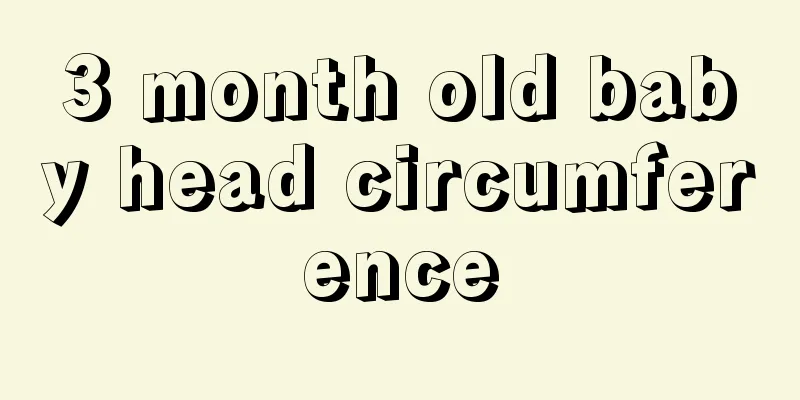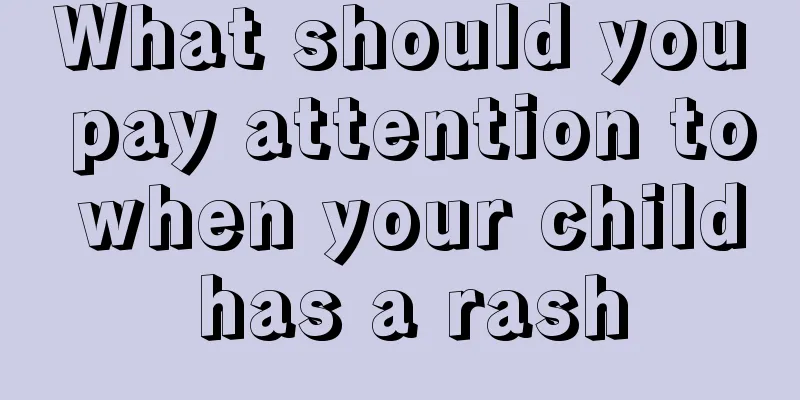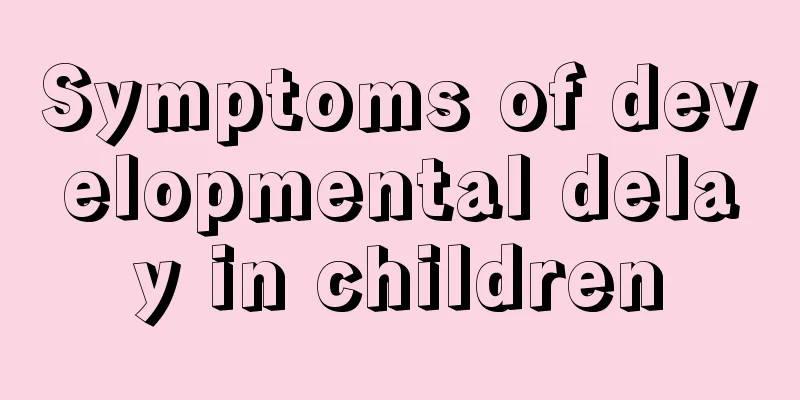3 month old baby head circumference

|
Many mothers must be very familiar with the term head circumference. After the baby is born, many mothers will pay special attention to the changes in the baby's head circumference. Under normal circumstances, the baby's head circumference will also change in different months. After measuring the baby's head circumference, if the value is within the normal range, the mother does not have to worry. Of course, if there is a slight difference in the value of the head circumference, there is no need to worry too much. Standard head circumference of a three-month-old baby The standard head circumference of a three-month-old baby should be between approximately 38.2-43.4 cm for boys, with an average of 40.8 cm, and between 37.4-42.2 cm for girls, with an average of 39.8 cm. Generally speaking, a baby's head circumference will grow by about 8 cm in the first six months after birth, and by about 3-4 cm in the second six months. After the age of 4, the head circumference will grow very slowly, and will almost stop growing after the age of 10. The baby's head circumference can be measured according to the standard range above. If the actual head circumference is two standard deviations larger or smaller than the normal average, it can be diagnosed as macrocephaly or microcephaly. How to measure baby's head circumference How should the baby's head circumference be measured most accurately? We have said that the baby's head circumference refers to the maximum length of the head, so we should use a soft ruler to measure the baby's head circumference. Use a soft tape measure to wrap around the baby's head, passing through the middle of the eyebrows in the front and the most prominent point of the back of the head, which is the highest point of the occipital protuberance. The data obtained by going around the baby's head is the baby's head circumference. Generally, babies have less hair, so the thickness of the hair can be ignored. However, if the baby is older and has more hair, the hair should be parted for more accurate measurement. What does fetal head circumference mean? Fetal head circumference refers to the maximum length around the fetal head. The longest part of the fetus' head from front to back is usually the distance from the root of the nose at the forehead to the occipital protuberance at the back of the head, so the head circumference is generally the length of a circle from the root of the nose at the forehead to the occipital protuberance at the back of the head. What to do if your baby's head circumference is too small A baby's small head circumference generally means that the baby's head circumference is smaller than the median head circumference of babies of the same age minus two standard deviations, or even below the third percentile. At this time, the baby's intellectual development may be restricted, and the baby will also lag behind in physical strength. Some may even have convulsions. These babies generally have small and pointed heads and narrow foreheads. If it is determined after measurement that the baby's head circumference is small, you should go to the hospital in time to rule out some diseases. In addition, if conditions permit, you can do an intelligence test to see if the baby has intellectual defects. A comprehensive examination at the hospital can help your baby. |
<<: Newborn baby's mouth keeps moving when sleeping
>>: The baby's body is hot but the forehead is not hot
Recommend
What's wrong with my child's cough and low-grade fever?
The phenomenon of low fever is indeed very common...
Is brain retardation cerebral palsy?
Every parent hopes that their child is smart and ...
Antipyretic medicine for infants and young children
I believe that many parents are very troubled whe...
Prevention of lung infection in infants
We all know that children are very important trea...
Children's hands and feet are cold and their bodies are hot
I believe everyone has experienced the feeling of...
What kind of milk powder is good for a five-year-old?
Milk powder is a very nutritious food for childre...
What to do if a child has a hole in his or her big tooth
If children do not pay attention to dental care, ...
Why does my baby cough when drinking milk?
Every expectant mother will experience the phenom...
What foods can cause precocious puberty in children?
Children's growth and development is the topi...
Is it vitiligo if there are white spots on the face of a four-year-old child?
What's wrong with children having vitiligo? I...
What is the cause of itchy red spots on the palms of children's hands?
Children have relatively low physical resistance ...
Does cutting the umbilical cord hurt?
When a woman is pregnant, she usually passes nutr...
What are the detailed symptoms of epilepsy in children?
Epilepsy is most likely to occur in children aged...
What are the reasons for the sudden decrease in milk supply in full-month babies?
For babies who have just turned one month old, th...
What should children with tics not eat?
When a child suffers from tics, parents should ta...









